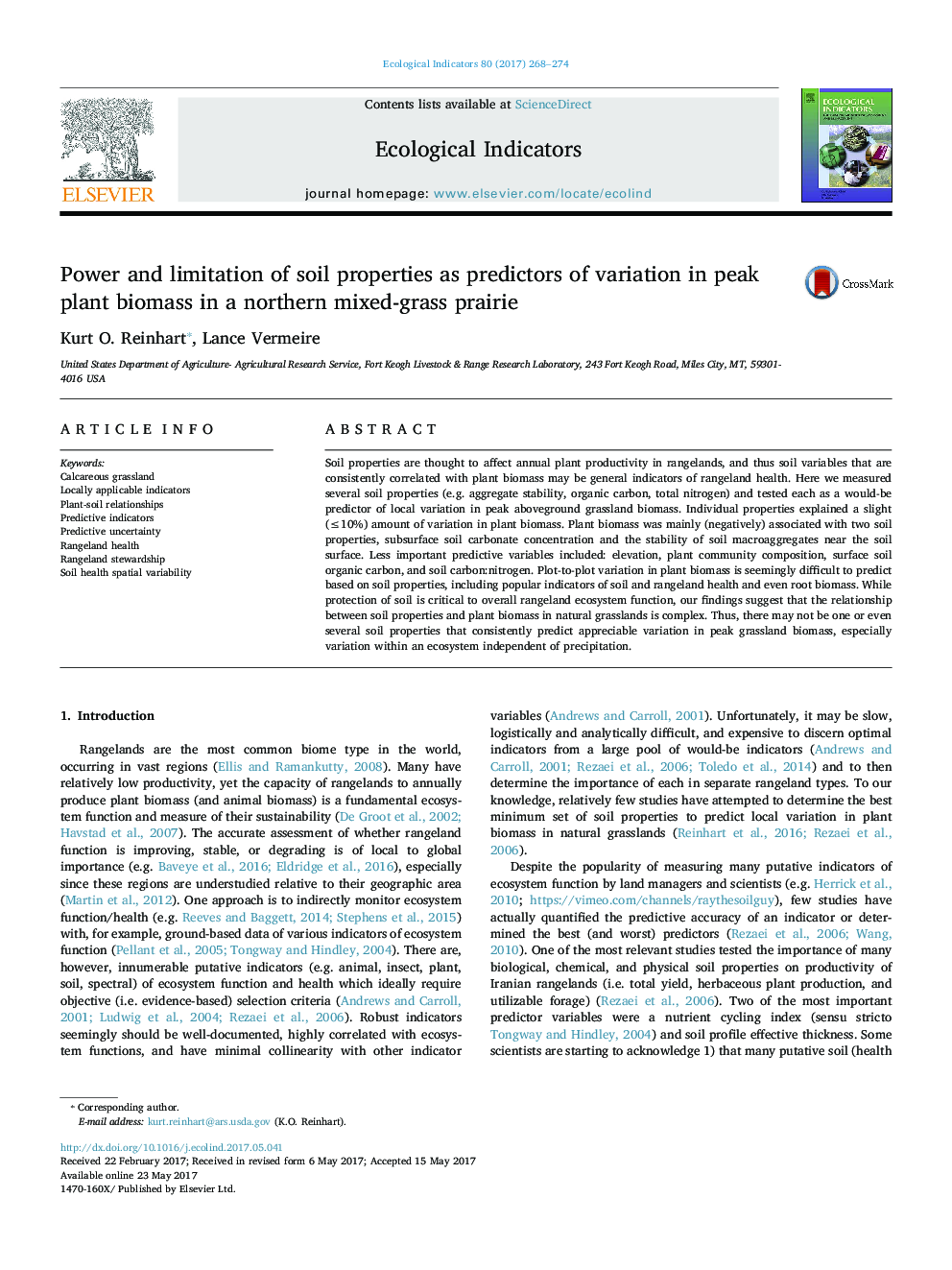| Article ID | Journal | Published Year | Pages | File Type |
|---|---|---|---|---|
| 5741389 | Ecological Indicators | 2017 | 7 Pages |
â¢Many soil properties are predicted to be positively correlated with grassland biomass.â¢Grassland productivity was weakly correlated with only a small subset of popular “soil health” indicators.â¢Determining the best indicator(s) of plot-to-plot variation in grassland biomass remains a challenge.â¢Monitoring indicators should explain actual (not potential) variation in ecosystem functioning.
Soil properties are thought to affect annual plant productivity in rangelands, and thus soil variables that are consistently correlated with plant biomass may be general indicators of rangeland health. Here we measured several soil properties (e.g. aggregate stability, organic carbon, total nitrogen) and tested each as a would-be predictor of local variation in peak aboveground grassland biomass. Individual properties explained a slight (â¤10%) amount of variation in plant biomass. Plant biomass was mainly (negatively) associated with two soil properties, subsurface soil carbonate concentration and the stability of soil macroaggregates near the soil surface. Less important predictive variables included: elevation, plant community composition, surface soil organic carbon, and soil carbon:nitrogen. Plot-to-plot variation in plant biomass is seemingly difficult to predict based on soil properties, including popular indicators of soil and rangeland health and even root biomass. While protection of soil is critical to overall rangeland ecosystem function, our findings suggest that the relationship between soil properties and plant biomass in natural grasslands is complex. Thus, there may not be one or even several soil properties that consistently predict appreciable variation in peak grassland biomass, especially variation within an ecosystem independent of precipitation.
